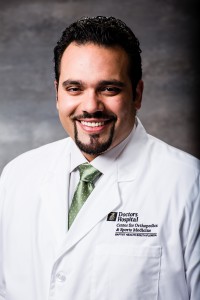March 27, 2020 by John Fernandez
Start Now to Prevent Future Fractures

If you have been listening to the news over the past several years, you know there is a real push within the medical community and the media to focus on wellness and prevention. In the past, it was thought that there were certain conditions like osteoporosis and osteopenia that naturally would occur as you began to age, and as an elderly person it was your burden to learn to live with them.
Now we know better.
As the population ages, fragility fractures have become almost an epidemic in the U. S., with more than 2 million fractures each year. Fragility fractures (fractures that result from any fall from a standing height or less or occur from the absence of trauma), affect more people than heart attacks, strokes and breast cancer combined, according to the OwntheBone program promoted by the American Orthopaedic Association.
“The OwntheBone program began within the last eight years,” says Dr. Charles Jordan, an orthopedic surgeon at Doctors Hospital and West Kendall Baptist Hospital specializing in orthopedic trauma and general orthopedic surgery. “It’s a great initiative that encourages physicians to not just treat the fracture but treat the disease as well. If physicians perform a low-density bone test on patients when they are healthy, we can determine if they might be at high risk for fractures and for developing fractures in the future and we can prescribe treatments that may prevent them.”
Dr. Jordan says that in accordance with U.S. Preventive Services Task Force (USPSTF) guidelines, bone-density testing should be performed by everyone above the age of 65 and in younger people, especially those 55 and older, if your doctor determines that you may be at risk for future fractures even if you are active and healthy. Bone-density testing should be repeated every two years.
What is osteoporosis and osteopenia?
Osteoporosis is a medical condition that weakens the bone by making it more porous and less dense, which results in bone loss. The condition has been associated with increased risk of fracture and may go unnoticed for years until a fracture occurs.
Like osteoporosis, osteopenia is associated with bone loss or low bone mass, but it is not as severe. There are no symptoms of the condition and osteopenia is usually diagnosed with a bone-density test.
What are the causes of osteoporosis?
The exact medical cause of osteoporosis is not known, but several factors such as aging, heredity, nutrition, lifestyle, medications and other illnesses such as cancer are known to be contributing factors. Some risk factors like gender and age cannot be changed. Other factors such as eating habits and lifestyle activities can be adjusted.
How is osteoporosis treated?
There is no one cure for osteoporosis. But if you are diagnosed with the condition or even if you are not diagnosed with osteoporosis, the American Academy of Orthopaedic Surgeons (AAOS) recommends:
· Make sure you get enough calcium and Vitamin D. The National Institutes of Health (NIH) recommends a daily allowance of 1,200mg/day of calcium and 600 IU/day of Vitamin D calcium for women ages 51-70. For males, the recommendation is slightly lower: 1,000 mg/day of calcium and 600 IU/day of Vitamin D.
· Exercise can help prevent osteoporosis. Participate in activities that will strengthen bone and muscle. Walking, jogging, tennis and low-impact aerobics are good to build and maintain strong bones.
· Decrease your risk of falling by learning balance activities like Tai Chi-style exercises. Studies have shown that Tai Chi–style exercises decrease falls among older individuals by 47 percent.
· Talk to your doctor about having a bone-density test, if you have had any broken bones.
It is estimated that one-in-two women and one-in-four men over 50 will have a bone fracture caused by osteoporosis, according to AAOS. It is anticipated by the year 2025, there will be more than 3 million Americans with the condition.
“Our new perspective during what is known as the orthopedic bone and joint decade, is to think about our patient’s futures, anticipate fractures and learn to prevent them,” says Dr. Jordan. “We’ve made some progress over the past several years, but increasing awareness is the tried-and-true method of achieving success.”
 About Charles Jordan, M.D.
About Charles Jordan, M.D.
Charles Jordan, M.D., is an orthopedic surgeon specializing in orthopedic trauma and general orthopedic surgery. His areas of expertise include complex fractures and musculoskeletal injuries, upper and lower extremity reconstruction and chronic post-traumatic orthopedic conditions. Dr. Jordan earned his undergraduate degree from Duke University. He then attended medical school at the University of Medicine and Dentistry of New Jersey, where he graduated at the top of his class and was elected to the Alpha Omega Alpha medical honor society. He completed his residency in orthopedic surgery at the NYU Hospital for Joint Diseases in New York City, where he served as administrative chief resident. He then completed a fellowship in orthopedic trauma at the Florida Orthopedic Institute in Tampa. Dr. Jordan has lectured nationally on orthopedic injuries and published in several medical journals and medical textbooks on orthopedic treatments and surgical techniques. Dr. Jordan has served as a physician for the Alvin Ailey Dance Theater and the New York City Public School Athletic League.
top stories












There are no comments